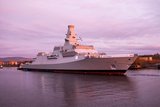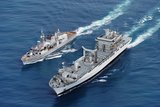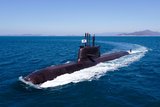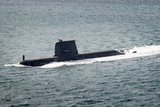Indra tests Targus critical systems
Indra, with its partner Gaerum, has started simulated flight tests of the Targus optionally piloted vehicle (OPV) to validate the design of the aircraft's critical systems, the company announced on 11 January.
The companies have begun studying the flight control, navigation and mission systems at Rozas’ Center for Research and Experimentation in Castro de Rei, Spain.
Indra uses an advanced simulation methodology known as software-in-the-loop/hardware-in-the-loop that makes aircraft systems believe that they are actually in the air.
Electronic system behaviour is being tested in an environment set up to be 100% realistic. The results of the numerical simulations previously performed in the lab are now being fine-tuned and once the correlation between the behaviour of the system in the simulator and in the air is confirmed with a flight test, all these simulation hours will be regarded as real flight hours.
Once the tests with these components are completed, the next step will be to integrate them into the experimental aircraft for the development of the Targus. A battery of tests in the simulator will optimise the algorithms of the flight control and navigation system. Once these tests are passed, the flight experimentation stage will be undertaken.
Indra is also working on the integration of the ground segment, which will operate the aircraft from the ground and will control all its mission equipment.
The Targus aircraft is equipped with advanced surveillance technology to conduct missions related to maritime surveillance; to support salvage and rescue missions, forest surveillance and fire-fighting, and to monitor land use and historical heritage sites.
More from Naval Warfare
-
![UK MoD’s confirmation of MBDA missile for Type 26 points to more European collaboration]()
UK MoD’s confirmation of MBDA missile for Type 26 points to more European collaboration
The Type 26 will also be fitted with the Sea Ceptor vertically launched air defence system that can fire CAMM missiles and a 24-cell Mk 41 vertical launch system that can fire the Tomahawk land-attack cruise missiles, anti-submarine rockets and long-range anti-ship missiles.
-
![Second Royal Canadian Navy Joint Support Ship is on schedule to be launched mid-2026]()
Second Royal Canadian Navy Joint Support Ship is on schedule to be launched mid-2026
While the first Joint Support Ship is currently in the final stages of outfitting, the second one is on schedule for launching next year.
-
![Is South Korea finally being taken seriously for Western submarine programmes?]()
Is South Korea finally being taken seriously for Western submarine programmes?
South Korean shipbuilders are beginning to make their mark beyond Asia, competing for major North American and European submarine programmes and becoming serious contenders on a global scale.
-
![AUKUS Pillar 2 could narrow focus to “four key areas” says UK official]()
AUKUS Pillar 2 could narrow focus to “four key areas” says UK official
Few concrete ideas have emerged so far on which “advanced capabilities” will be brought forward under Pillar 2 of the AUKUS partnership, but the Pentagon’s review of the programme could bring more clarity.























